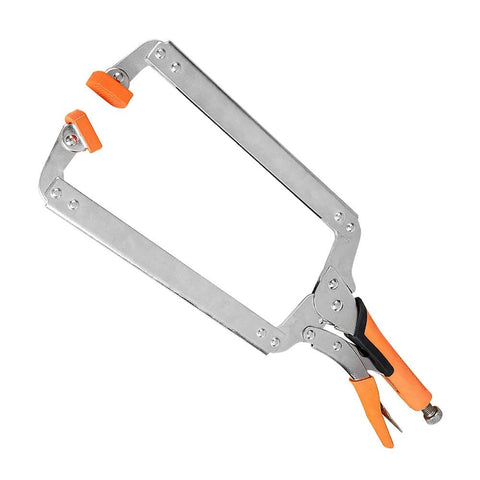Essential Clamps for Woodworking: A Guide to Making the Right Choice
Clamps are indispensable woodworking tools, providing the necessary pressure and stability to hold workpieces together during various woodworking operations. However, with a wide array of clamp types available, choosing the right ones for your Wwoodworking projects can be overwhelming. In this article, we will explore essential clamps for woodworking, discussing their features, applications, and considerations to help you make informed decisions and enhance your woodworking experience.
- Bar Clamps
Bar clamps, also known as parallel clamps, are versatile and widely used in woodworking. They consist of a metal bar with movable jaws that can be adjusted to accommodate different workpiece sizes. Bar clamps provide even pressure distribution and are ideal for gluing and clamping larger projects, such as tabletops or cabinets. Look for bar clamps with a sturdy build, smooth operation, and sufficient clamping capacity to suit your project requirements.
- Pipe Clamps
Pipe clamps are cost-effective alternatives to bar clamps, utilizing common threaded pipes as the clamping mechanism. They consist of two clamping heads that slide along the pipe, allowing for adjustable jaw positioning. Pipe clamps are excellent for larger glue-ups and can be easily extended by using longer pipes. However, they may require additional setup time and care to ensure even pressure distribution along the workpiece.
- C-Clamps
C-clamps, named after their distinctive shape, are versatile and suitable for various woodworking tasks. They feature a fixed jaw and an adjustable screw mechanism for tightening. C-clamps are available in different sizes, making them useful for small to medium-sized projects, as well as for securing workpieces to a workbench or jig. They are valuable for holding pieces during cutting, drilling, or assembling operations.
- Spring Clamps
Spring clamps, also known as hand clamps or pinch clamps, are lightweight and easy to use. They feature a spring-loaded mechanism that applies pressure when the handles are squeezed together. Spring clamps are convenient for quick and temporary clamping applications, such as securing small parts, holding glue joints during drying, or attaching jigs. They are particularly useful when working with delicate or irregularly shaped objects.
- F-Clamps
F-clamps, also called sliding clamps or bar clamps, have a similar design to bar clamps but with a fixed jaw at one end and a sliding jaw that can be adjusted along the bar. F-clamps offer versatility and a wide range of clamping capacities. They are suitable for a variety of woodworking tasks, from holding workpieces during assembly to securing jigs or fixtures. Look for F-clamps with a sturdy build, smooth sliding action, and ergonomic handle design.
- Band Clamps
Band clamps utilize a flexible strap or band with a ratcheting mechanism to provide even pressure around irregularly shaped or angled workpieces. They are commonly used for clamping edge banding, veneers, or curved pieces. Band clamps are adjustable and versatile, allowing for precise and uniform pressure distribution. Look for band clamps with durable straps and secure locking mechanisms to ensure reliable clamping.
Clamps are essential tools for every woodworker, providing the necessary stability and pressure to hold workpieces together during various woodworking tasks. Bar clamps, pipe clamps, C-clamps, spring clamps, F-clamps, and band clamps are among the essential types of clamps for woodworking. Each type has its unique features, advantages, and applications. By understanding the characteristics and applications of different clamps, you can build a collection that suits your woodworking needs, ensuring precise, secure, and successful woodworking projects.
